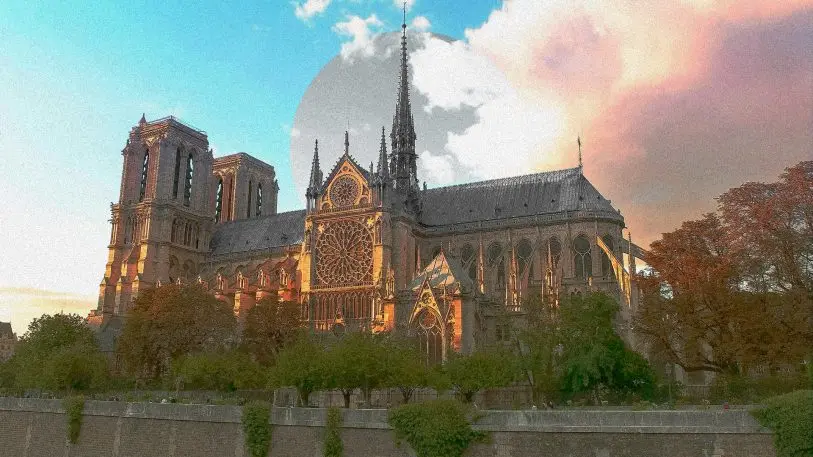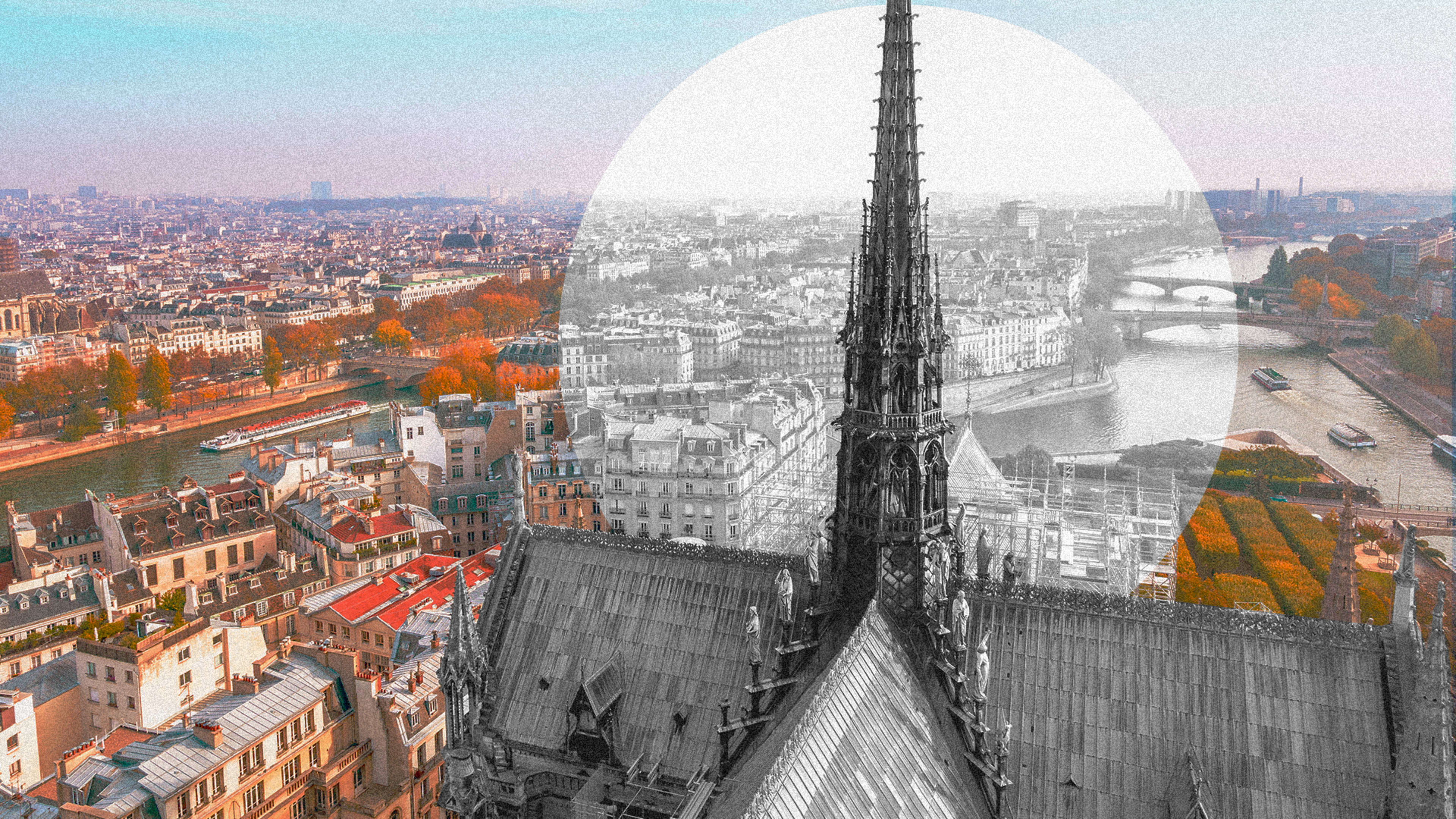Calls to reconstruct Notre-Dame practically began before the fire was even put out this week–and it’s more than plausible that the cathedral could be rebuilt in nearly identical form, thanks in part to the existence of detail digital models of the building. But deciding whether it should be rebuilt as a replica is more complicated. It’s a question that has defined historic preservation for decades: Should architects attempt to recreate the design of the past as faithfully as possible, or think of their work as more of a conversation between past and present?
This week, French prime minister Edouard Philippe announced that the government would host a design competition to replace the lost spire, in an effort to help officials decide how to proceed with a restoration. “The international competition will allow us to ask the question of whether we should even recreate the spire as it was conceived by Viollet-le-Duc,” Philippe said, according to the New York Times. “Or if, as is often the case in the evolution of heritage, we should endow Notre-Dame with a new spire.”

The debate is already raging. Notre-Dame’s former chief architect, who was responsible for the building for more than decade, described his stance to Reuters, suggesting that an exact replica wouldn’t really be faithful to the spirit of a building that had already been so “heavily modified,” but that “we must recreate the cathedral’s silhouette and rebuild the spire. That to me is indispensable.” A group of Viennese architects drolly suggested a condo where the now-ruined rooftop once sat (“Quadimodo’s Penthouse”). The conceptual artist Wim Delvoye, who has used gothic architecture as an inspiration for much of his recent work, pledged to enter the competition and use contemporary fabrication techniques to rebuilt the spire, saying he felt “strongly called upon to contribute to the reconstruction of this monument.”
It’s worth pointing out just how much of a pastiche Notre-Dame already was–in part thanks to Eugène-Emmanuel Viollet-le-Duc, who was appointed to restore the run-down cathedral in the mid-1840s. Viollet-le-Duc was a romantic and a medievalist, with his own wild ideas about how Notre-Dame “should” look. As Jacqueline Banerjee, associate editor of the Victorian Web, writes, he designed the building’s now-lost spire, basing it not on the original but on a completely different, contemporary tower. He even designed himself into the building, as Banerjee explains, adding a statue of “St. Thomas, bearing Viollet-le-Duc’s own likeness, and holding an aid to draughtsmanship.”
So the idea that contemporary architects would ever be able to recreate a “true” replica of Notre-Dame ignores the fact that the building is itself a mixture of eras, designers, and histories. Another famous church, not so far away from Notre-Dame, offers a case study in the way modern architects can preserve ruins but add their own voices.
Kaiser Wilhelm Memorial Church, in Berlin, was built in the late 19th century and almost completely destroyed during World War II. The city held its own competition in the 1950s, attempting to decide–just like Paris must–whether to reconstruct or preserve the ruins. The winner, Egon Eiermann, suggested a design that would preserve the bombed-out building almost completely and construct a contemporary, International Style chapel in the midst of the ruins. The church was renamed the Gedächtniskirche or memorial church–an architectural reminder of the war.
The exact details of Paris’s design competition are still forthcoming, but it’s going to be fascinating to watch how the city deals with tricky questions of authenticity and history in 2019.
Recognize your brand’s excellence by applying to this year’s Brands That Matter Awards before the early-rate deadline, May 3.
